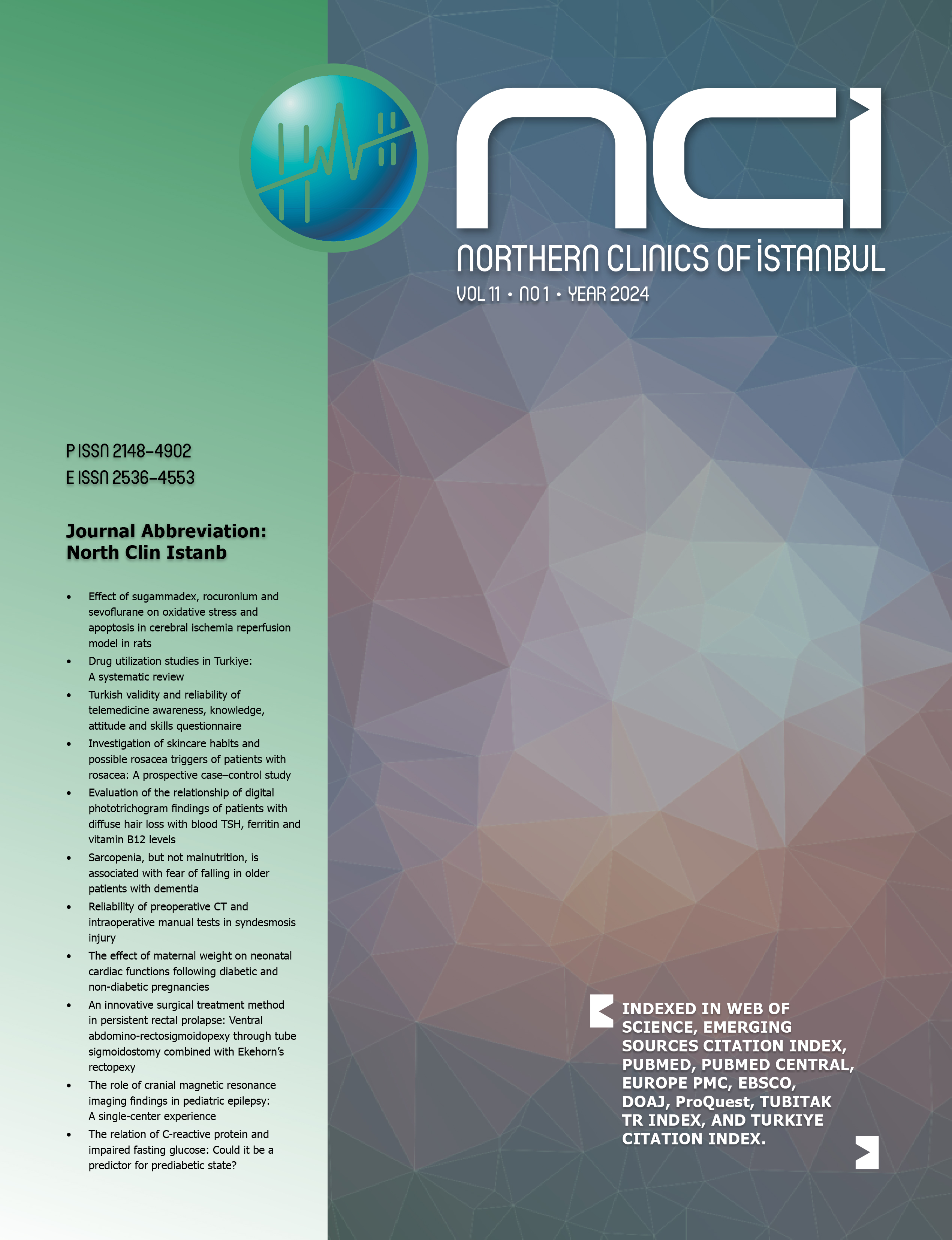Determination of urinary iodine excretion and iodine deficiency in school age children aged 7-11 after mandatory iodization in Canakkale, Turkiye
Kubra Cevik, Hakan AylancDepartment of Pediatrics, Canakkale Onsekiz Mart University Faculty of Medicine, Canakkale, TurkiyeObjective: The aim of this study is to determine the iodine deficiency status of school-age children in Canakkale, whose data were not known before.
Methods: The population of the research was created from students in the 7-11 age group studying in primary schools. 316 students were selected for the study group by multi-stage stratified sampling method. Physical examinations and anthropometric measurements of the children were performed. A survey was conducted to their families regarding the use of iodized salt. Iodine level was measured spectrophotometrically from the collected spot urine sample.
Results: One hundred forty-nine of the study group (47.2%) were male and 167 (52.8%) were female. Mean age was 8.74 ± 1.09 years, mean height SDS was 0.45 ± 1.09, mean weight SDS was 0.62 ± 1.27. Iodine deficiency was detected in 25% (79) of the study group, and most of them (20.5%) had mild iodine deficiency and 51.8% of the children. The mean iodine level in Canakkale was 15.8 ± 8.43 μg/dL.
Conclusion: In our study, we showed that the average urinary iodine level in school-age children in Canakkale was sufficient. However, we showed that Canakkale is an endemic region for iodine deficiency due to its high rate of mild urinary iodine deficiency.
Türkiye Çanakkalede zorunlu iyotlama sonrası okul çağı 7-11 yaş çocuklarda idrarda iyot atılımı ve iyot eksikliğinin belirlenmesi
Kubra Cevik, Hakan AylancÇanakkale Onsekiz Mart Üniversitesi Tıp Fakültesi, Çocuk Sağlığı ve Hastalıkları Anabilim Dalı, ÇanakkaleAmaç: Bu çalışmanın amacı Çanakkale ilindeki okul çağındaki çocukların iyot eksikliği durumunu belirlemektir..
Yöntem: Araştırmanın evrenini ilköğretim okullarında öğrenim gören 7-11 yaş grubundaki öğrencilerden oluşturuldu. Çok aşamalı tabakalı örnekleme yöntemi ile çalışma grubuna 316 öğrenci seçildi. Çocukların fizik muayeneleri, antropometrik ölçümleri yapıldı. Ailelerine iyotlu tuz kullanımı ile ilgili anket yapıldı. Toplanan spot idrar örneğinden iyot düzeyi spektrofotometrik olarak çalışıldı.
Bulgular: Çalışma grubunun 149'u (%47,2) erkek, 167'si (%52,8) kızdı. Ortalama yaş 8,74 ± 1,09 yıl, ortalama boy SDS 0,45 ± 1,09, ortalama ağırlık SDS 0,62 ± 1,27 idi. Çalışma grubunun %25'inde (79) iyot eksikliği saptandı. Bu çocukların %51,8'inde hafif iyot eksikliği vardı. Çanakkale'de ortalama iyot düzeyi 15,8 ± 8,43 μg/dL idi.
Sonuç: Çalışmamızda Çanakkale'de okul çağındaki çocuklarda ortalama idrar iyot düzeyinin yeterli olduğunu gösterdik. Ancak hafif idrar iyot eksikliği oranının yüksek olması nedeniyle Çanakkale'nin iyot eksikliği açısından endemik bölge olduğunu gösterdik. (NCI-2023-2-15)
Manuscript Language: English





















